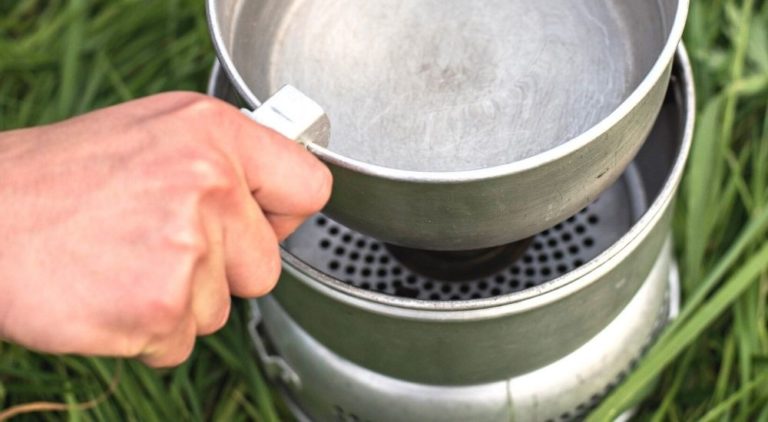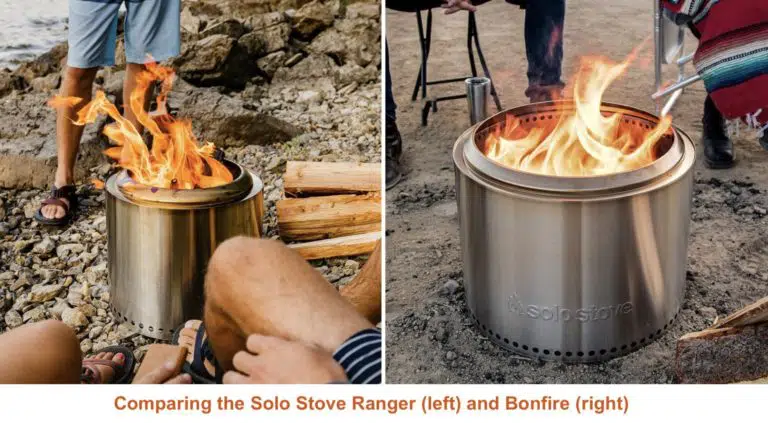How to Layer for Winter Hiking
Layering for winter hiking is essential. The more layers you have, the better the skin can breathe and the better sweat management hikers can enjoy. Multiple thin layers are superior to one thick layer in winter hiking mostly due to the ability to keep you warm without sweating.
Layering for winter hiking is different than dressing for summertime hiking. Layers are crucial in the winter when hikers face high wind, snow, and low temperatures. Overdressing is just as bad as underdressing for winter hikes. This is why it’s crucial to master the basics of layering for comfortable hiking.

Cold Weather Winter Hiking Layering Basics
At least 3 layers of clothes are recommended for wintertime hiking. These layers need to be sport-specific layers made from lightweight synthetic fibers for quick drying and waterproofing.
Leg insulation
Keeping legs warm is not complicated. You need between 2 and 3 layers of wintertime hiking pants to make your legs feel comfortable.
Base layer pants
Base layer pants or long johns are ideal for a first thermal layer with moisture-wicking abilities. Long thermal underwear is ideal for breathability. These pants sit on your legs which means they absorb sweat instead of trapping sweat on your skin. They release sweat quickly based on their synthetic fibers.
Outer layer insulated pants
Insulated outer layer pants are ideal for almost any type of wintertime hiking. They can be worn directly over the base layer. These pants need to be a bit more accommodating for all your base and mid-layers you want to wear underneath.
Good insulated outer layer pants also need to be waterproof. Making your way through high snow is almost impossible otherwise.
Hiking underwear
Hiking underwear is often overlooked. But it’s an essential part of keeping your lower body warm and dry. Multiple materials are used to make the best hiking underwear. Merino wool, polyester, lycra, and spandex tend to be the most popular among them. You can choose any of these materials as they all do a great job in constant motion such as in hiking.
Hiking socks
Most hiking socks are made with a combination of Merino wool, nylon, lycra, spandex, and elastane. Spandex and elastane are added to hiking socks to make them stretch out. These materials aren’t necessarily seen in outer layer clothes as they’re more specific to base layers. Hiking socks need to sit above your ankle to offer proper insulation.
Upper body insulation
Upper body insulation is often comprised of 3 layers for wintertime hiking. This starts with a base layer which is either a short sleeve or a long sleeve short, a warmer insulating layer, and an outer shell that offers protection from rain, snow, wind, and low temperatures.
Base layer
Base layers for the upper body are similar to those of the lower body. A synthetic materials shirt that sits close to the body will attract and release sweat without trapping it. This base layer also offers some levels of thermal protection which means it will make any mid-layer of your choice feel even warmer.
Insulating layer
The insulating layer can be considered from materials such as Merino wool, synthetics, or down. All of these have their role but the thicker the mid-layer insulation clothes are the roomier the outer shell needs to be.
When the temperature is well below freezing you should consider either a thick insulating layer or 2 insulating layers which you can juggle as needed.
Outer shell
The outer is the final layer of the upper body. Materials such as softshell or Gore-Tex tend to offer excellent protection from snow, rain, and wind. The outer shell also comes with an insulating layer which means it traps heat inside while keeping cold outside.
It’s best to choose an outer shell jacket that is easy to put on and take off. This means zipped outer shell jackets are the only solution for wintertime hiking as you might need to add or remove mid-layer insulating clothes as you get warm or cold through the hike.
The outer shell should also be considered depending on the type of hiking you plan to do in the winter. If you are out on a day hike you will not need the thickest insulation jacket as this will just slow you down. Multi-day hikes where you need to sleep in a tent outside might require packing an extra outer jacket in the backpack.
Accessories
Accessories such as hats, gaiters, and gloves are the finishing layers of wintertime hiking equipment. Hats are crucial for keeping your head warm, gaiters keep your feet dry, and gloves protect your hands. You’ll want to cover as much skin as possible in wintertime hikes.
Hats
Wintertime hiking hats need to offer thermal insulation. If you choose a hat that isn’t waterproof, you should pack more hats just in case it gets wet through the hike. However, you might consider all types of hiking hats if your outer shell jacket comes with a hoodie, which is always a plus when it comes to winter hikes.
Gaiters
Wintertime hiking layers are completed by gaiters. These can be taken off as needed when you aren’t hiking through deep snow.
Gloves
Winter hiking gloves can be as thin or as thick as the situation requires them. Some type of insulation is needed with these gloves, however. As base layers, winter hiking gloves need to keep your hands warm and dry. Sweaty palms are problematic for almost any hiker.

Why dress in layers for winter hiking
Dressing in layers for the wintertime is a proven method of staying warm, comfortable, and safe outdoors at low temperatures. Here’s why the 3-layer clothing system works so well.
Regulate body temperature
The first reason to consider the 3-layer clothing system is to regulate body temperature. Physical activities such as hiking generate higher body heat. The layered clothing system allows your body to breathe, essentially keeping its temperature down when you hike. A cool body temperature would not be possible when sweat is trapped on your skin.
Tackle changing temperature
The 3-layer system is ideal for each hiker. Since hikers can feel comfortable in different clothes, the layered system allows for good customization depending on personal preferences. Hikers can choose the materials that feel the most comfortable for them without having to wear a universal layer that is made for everybody.
Takeaway
Layering for wintertime hiking is crucial. The 3-layer system (base layer, insulating layer, and outer shell) has proven practicality when hiking out in cold weather. Regardless of whether you’re hiking in snow or dry winter conditions, you can still benefit from wearing layered clothing.
Wintertime hiking clothes are different from those worn in other seasons. Summertime hiking clothes are normally abiding by the 1-layer dressing principle. Fall hiking clothes typically only need 2 layers of clothes. Wintertime hiking clothes are the most complex as they need to deal with constant body heat changes.
Apart from the layered system, proper hiking boots for the winter are a must. Your boots need to come with thick insulation and waterproofing if you’re planning to hike through the snow and if you plan to hike in wet terrains. You can put gaiters on your hiking boots for the winter to keep the snow out, even if they’re made with waterproofed materials.
Top 5 Winter Hiking Tips For Complete Newbies
How To Heat a Camper Without Electricity – 12+ Things to Do
16+ Hiking in the Summer Tips and What to Wear to Stay Cool






